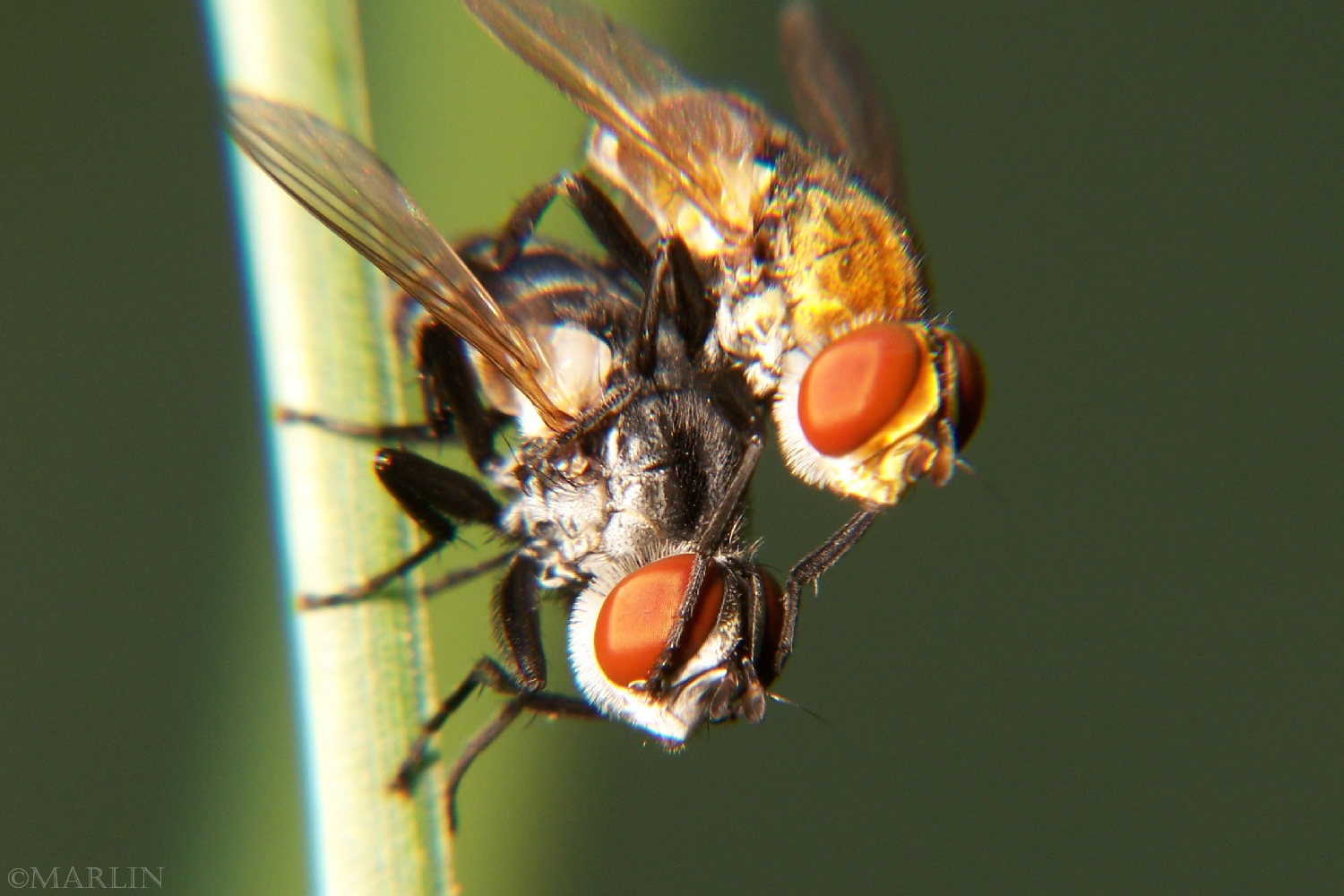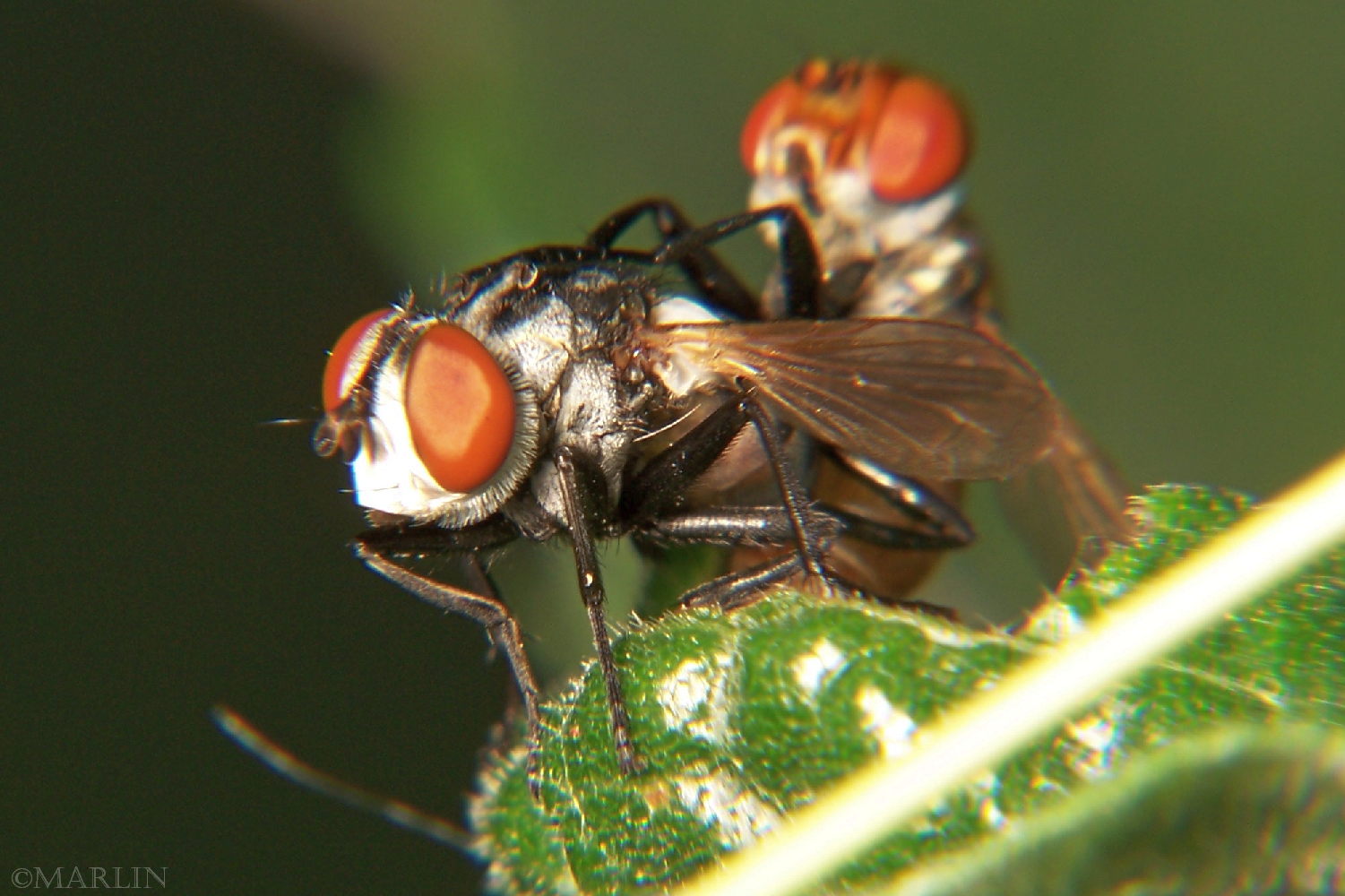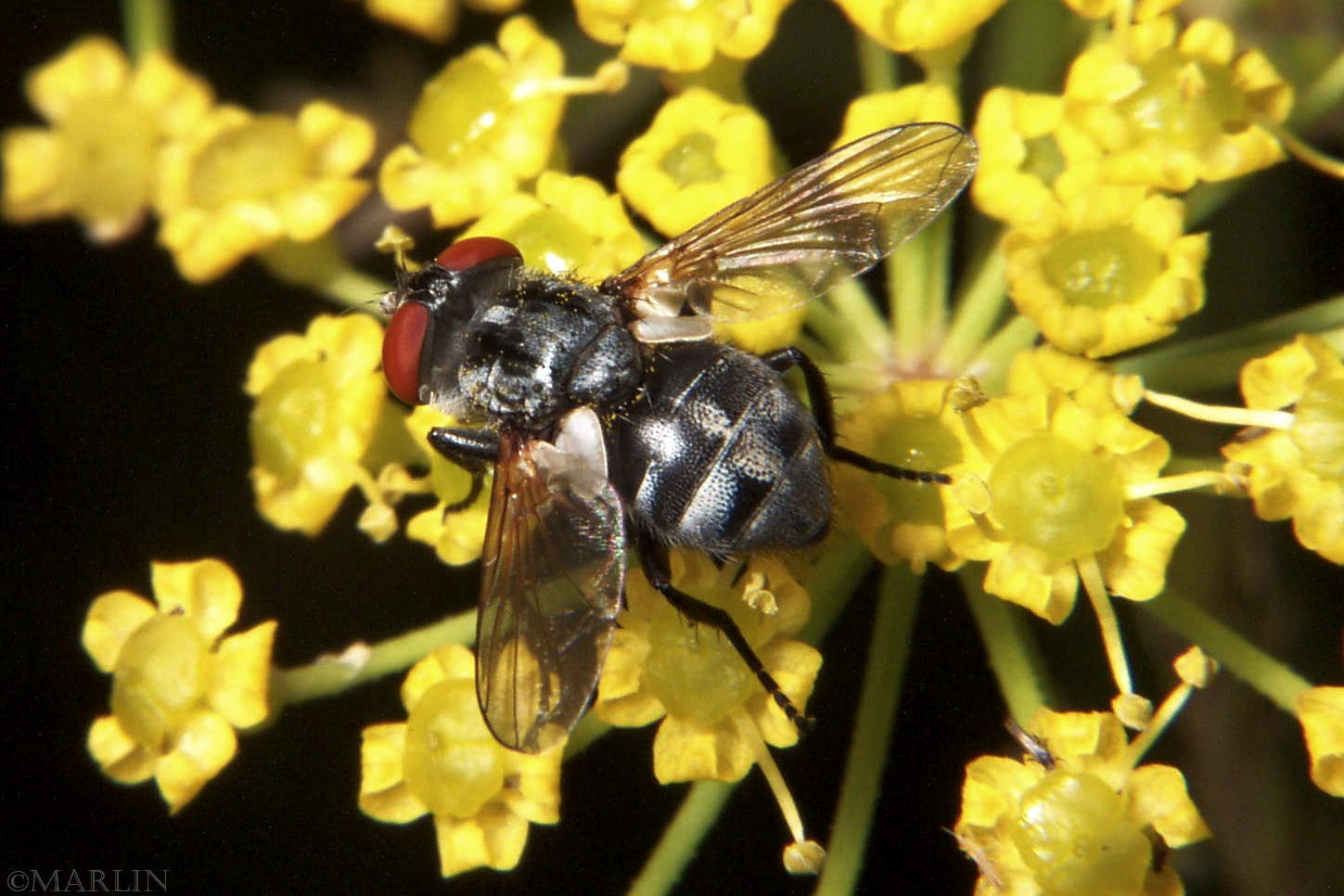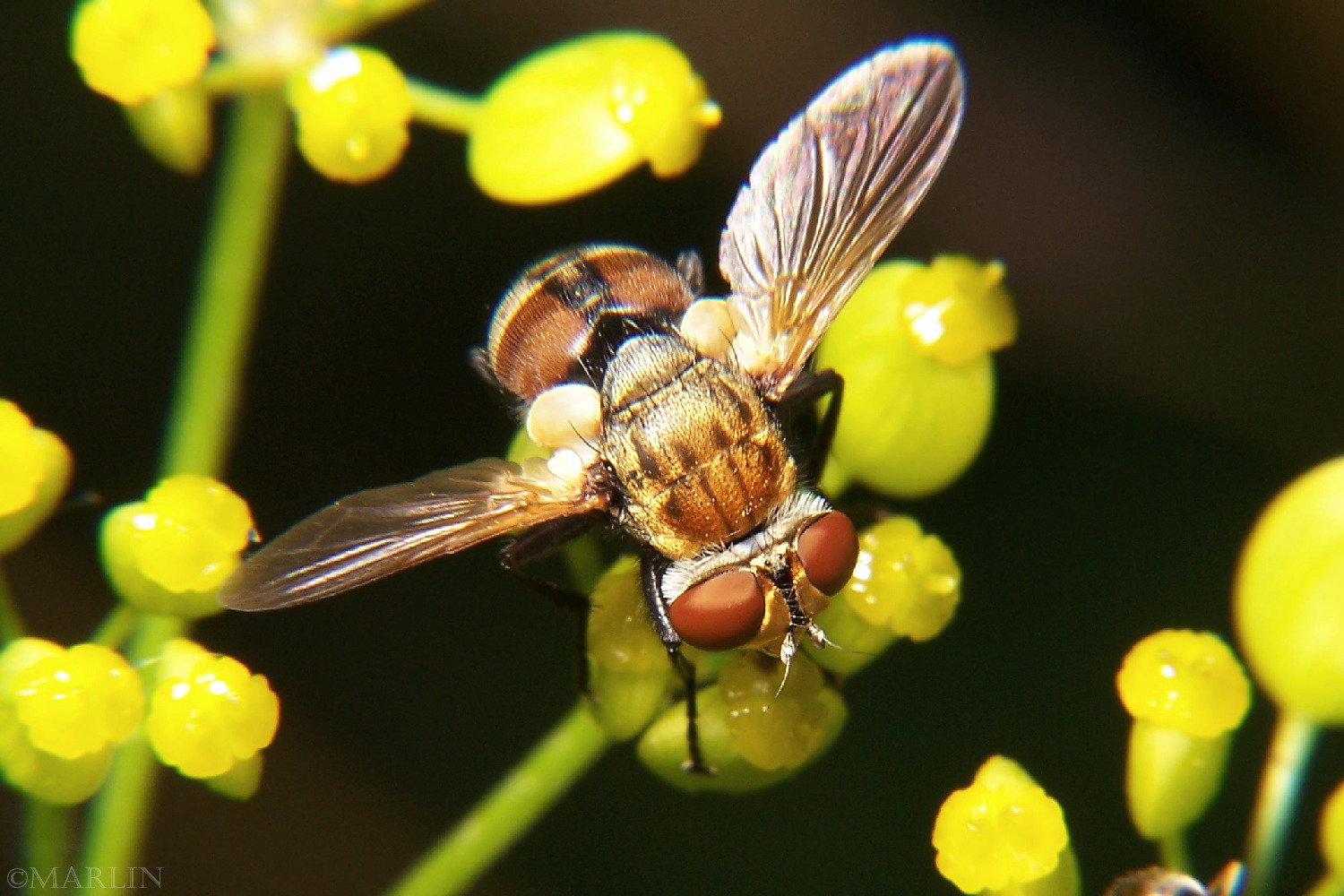Tachinid Fly – Gymnoclytia Species
Subfamily Phasiinae is among the most primitive of the tachinid flies. They lack a uterus, or ovisac, that allows for storage of eggs undergoing embryonic development. They deposit their undeveloped (unembryonated) eggs either directly onto the skin or partially or completely insert them inside the host.
Eggs maturing on the outside of the host remain vulnerable for several days and are subject to removal by the host or are lost when the bug molts.
nother strategy shared by the vast majority of Tachinidae involves eggs that have completed much of their development inside their mother prior to deposition – such eggs are ready to hatch quickly so that the larvae can gain protection by burrowing into the host. (Some hatch so quickly it was thought the flies were positing live maggots.)
Females employing this method are capable of storing hundreds or thousands of eggs in a range of development, spitting out the mature ones from the distal end of her ovisac-conveyor belt [1].
Tachinids patronize at least eight orders of insects as hosts; Lepidoptera larvae probably support the largest number of species, esp. in the large subfamilies Tachininae and Goniinae. Flies in subfamily Phasiinae most often parasitize true bugs in Hemiptera such as stink bugs, leaf-footed bugs, seed bugs and damsel bugs [1].




